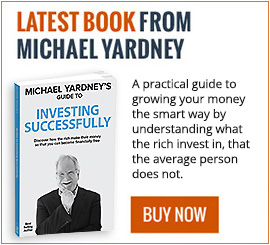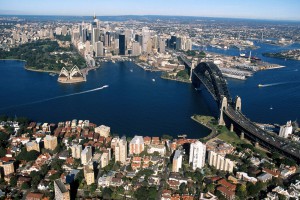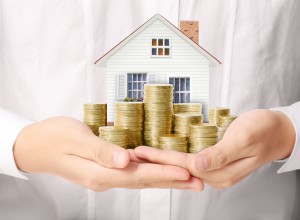There are more interesting articles, commentaries and analyst reports on the Web every week than anyone could read in a month.
Each Saturday morning I like to share some of the ones I’ve read during the week.
The weekend will be over before you know it, so enjoy some weekend reading…and please forward to your friends by clicking the social link buttons.
The suburbs where half of all homes are mortgage-free
It’s not often these days that we hear of everyday Aussies owning their home outright – but it would seem some suburbs have done just that.
This article from Domain.com.au highlights suburbs where half of all homes are mortgage free.
Fewer than a third of Australians own their home outright, but there are particular pockets of the country where a high proportion of Australians are sitting on million-dollar properties without a mortgage.
The country’s top mortgage-free suburb is Park Ridge in Brisbane’s Logan area, with a median price of $471,000, but it’s not the same trend being seen in Sydney and Melbourne.
In these two booming cities, the suburbs with the highest rate of fully-owned homes were predominantly million-dollar plus neighbourhoods, an analysis of census data for suburbs with more than 500 homes by Finder shows.
At the top of the list for Sydney was the lower north shore’s Longueville – with a median house price of $4.9 million on Domain Group data, with predominantly family homes, many with five bedrooms, on larger blocks of land.
Here, 57.5 per cent of home owners were living mortgage-free.
And in Melbourne, the top suburb was western suburbs’ Avondale Heights, closely followed by Bulleen and Wheelers Hill in the east.
These are also relatively expensive locales dominated by detached houses.
In Canberra, one suburb had more than 50 per cent of homes owned outright – Isaacs with 50.9 per cent.
These areas are by far from average – the home ownership rate has been dropping across the country, and research shows more Australians will retire with mortgage debt than ever before.
Instead, they are likely representative of “long established suburbs with an older demographic who have paid off their homes,” Finder spokesperson Bessie Hassan said.
This tends to be home owners who bought in before real estate prices boomed.
“Certainly many of these suburbs are home to a lot of cashed up retirees.
The data shows up to half of the population in some of these areas are aged over 55,” she said.
This compares to 27.5 pr cent of the Australia-wide population being aged 55 plus.
Read the full article here
4-year low for new home sales
It would seem that the property market has taken a slower pace in new homes.
This Blog by Pete Wargent shows the statistics behind the results.
Building boom is ending
More evidence that the building boom is coming to an end.
New home sales are now tracking at their lowest level since August 2013, and are well down from the record highs of 2015.
Monthly sales dropped by -3.7 per cent in July, following on from a sharp -6.9 per cent drop in the preceding month.
Source: HIA
The Housing Industry Association (HIA) media release noted that the decline was driven by a big drop in new apartment sales.
There was one “notable exception”, being Victoria, where new dwelling sales remained strong in rising +9.8 per cent in the month.
The HIA expects activity to decline for a number of years, albeit from record high levels.
Read the full article here
John McGrath says Sydney house prices are overvalued by 40%
Property prices is Sydney have seen dramatic price rises in recent time – and it’s not slowing down.
But are they in fact overvalued?
An article from Business Insider has reported claims from John McGrath suggesting that Sydney is in fact greatly overvalued.
There’s no shortage of people who think Sydney house prices are extremely overvalued, and John McGrath, executive director of McGrath Estate Agents, is among them.
According to a report on the Mortgage Business website today, McGrath told an audience at the AussieThink conference on the Gold Coast earlier this week that Sydney’s real estate market is overvalued by 40% and approaching the end, if it’s not already there, of the current price cycle.
“I don’t see any material capital growth in the next few years,” he told the conference, adding that “we [McGrath] think the Sydney market is 40% overvalued.
However, while McGrath is of the view that Sydney’s property market is both overvalued and nearing the end of the current price uplift, he’s not expecting that there’ll be a cataclysmic collapse in house prices as some more bearish commentators currently suggest.
“We say internally what a good thing it is the market is settling down in Sydney, and we think that over the next few years there will be a short, small correction in small single digits — 3, 4, 5% — but we see nothing worse than that,” he said.
That mirrors his view on Melbourne’s housing market, currently the hottest of all capital cities in terms of annual price growth, according to recent data from CoreLogic.
“We have population growth, a strong economy, overseas investment, a number of things that have driven [the price increases] and I believe that it will continue to drive strong markets especially in these cities,” he said. “Couple that with relatively low interest rates as well, so that’s helpful.”
While McGrath sees a period of consolidation in Sydney and Melbourne’s housing markets, he said that there likely brighter times ahead for Australia’s smaller capitals, especially when it comes to Brisbane and southeast Queensland.
“If you look at the traditional gap in value between Sydney and Brisbane, it’s certainly greater now than I’ve ever seen in the 35 years of real estate history,” he said.
“So, do I think Sydney is overvalued? Yes. Do I think Brisbane is undervalued? Yes. I think Brisbane and SE QLD are undervalued.”
Source: CoreLogic
According to data from CoreLogic, the median house price in Sydney and Melbourne rose to $856,000 and $655,000 respectively in July, leaving the gains in both cities since the start of 2009 at over 100%.
Click here for the full article
New report shows housing affordability in Australia will continue to be an issue for a long time
The issue of housing affordability continues to dominate headlines on a daily basis.
According to this article form News.com.au there is little to no signs that we’ll be seeing the end of this issue for a while.
HOUSING affordability is likely to be an issue for at least 40 years, with the demand for new homes needing bold policy, a major new report says.
The report by the Committee for Economic Development of Australia, to be released on Tuesday, says policy needs to reflect the great Australian dream of owning a home is over for many people.
“What the CEDA report highlights is that … the issue is far more complex and without changes now, could have longer-run consequences,” CEDA chairman Rodney Maddock says in the report.
It finds a decline in interest rates and the end of credit rationing has caused housing prices to surge worldwide and the poorest will struggle to find homes.
One of the report’s authors suggests Australia needs 20,000 new dwellings that are affordable to low-income people each year.
The paper also recommends measures including:
• Council planning restrictions need to be relaxed and more consistent, and housing density should be increased.
• Changes to tenancy laws to provide certainty to long-term renters.
• A move towards charging an annual land tax instead of transaction taxes such as stamp duty.
• A larger component of capital gains should be taxed.
The committee’s report suggests long-term housing affordability issues will mean more people enter retirement without owning a home.
Or those from lower socio-economic households are left to move to the regions or outskirts of cities where there are fewer transport and job options.
Click here for the full article
A Look At The Apps That Make You The Most — And Least — Happy
Are your apps controlling your moods?
Sounds ridiculous – but it’s in fact more common that you think.
An article on the Huffington Post has rated the apps making you most happy, and those causing you sadness.
Considering all the time we spend on our phones these days, we don’t always think about how that ubiquitous piece of technology is making us feel.
And as it turns out, it’s making us feel A LOT.
Time Well Spent, a company dedicated to designing technology that doesn’t “hijack our minds,” put out a survey along with Moment, an app that tracks how much time you spend on your phone (yeah, we’re a little scared to check those stats too), asking 200,000 iPhone users for feedback about the apps on their phone.
They found plenty of specific results, but one overarching one: the more time an app demands of us, the more unhappy we are using it.
Of the apps that made people happy, they were either efficient about time usage (like Google Calendar or Podcasts) or specifically geared towards making people happy (like Calm or Headspace, both of which are meditation apps).
Meanwhile, the list of the apps that made people the most unhappy are a combination of games (which were likely created in order to have the opposite effect) and — no surprise here — social networks and dating apps.
While the survey doesn’t offer an analysis of the results, Time Well Spent’s general hypothesis is that any technology designed to keep you glued to your screen will sap your willpower and make you less present.
Click here for the full article
Weekend video: Little Big Shots – Father’s Day Is Serious Business!
from Property UpdateProperty Update https://propertyupdate.com.au/weekend-reads-must-read-articles-from-the-last-week-25/











No comments:
Post a Comment